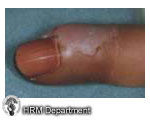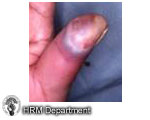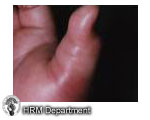Being the most exposed part of the body, Hand Infections are extremely common. They are most commonly caused by bacteria. Infection due to other organisms is rare.
The following are the most common types of Hand Infections:
Paronychia
This is an infection around the nail fold. People involved include housewives, restaurant kitchen helpers, cleaning workers, drink sellers, nail biters, and post manicure treated individuals.

Felon
A felon is a subcutaneous abscess of the distal pulp of the fingertip. This is usually cause by trauma as a portal of entry. Open drainage is necessary and probed to ensure all involved septa spaces are exposed.

Infective Tenosynovitis
Infection of the tendon sheath is the most serious of all hand infections. It may lead to deeper infections affecting bone joints and eventually the blood.

Septic Arthritis and Osteomyelitis
Infections of the bone and joints of the hand are commonly the result of direct penetrating injuries, and spread from adjacent infections.
Secondary Infections from Bites
The bitten hand is a common clinical problem. Some bites are self-inflicted through nail biting, while others are traumatically introduced through deliberate bites, or through a fist coming in contact with the teeth. Dog and cat bites account for 90% of animal bite infections. However, the incidence of rabies is rare because of urban vaccination programs for domestic animals.




















